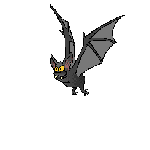![]()
Because
actual depth is fundamental to three-dimensional art, one must be in the presence
of the artwork to fully appreciate it. Words and graphic representations of
three-dimensional art are not substitutes for actual experience. Two-dimensional
depictions are flat, rigid, and representative of only one viewpoint; however,
they do serve as a visual shorthand for actual sensory experiences. But we emphatically
encourage readers to put actual observation into practice.
Practicing artists and art authorities designate the three-dimensional qualities
of objects in space with such terms as form, shape, mass, and volume.
The term form can be misleading here the inventive arrangement of all the visual elements according to principles that will produce unity. In a broad structural sense, form is the sum total of all the media and techniques used to organize the three-dimensional elements within an artwork. In this respect, a church is a total form and its doors are contributing shapes; similarly, a human figure is a total form, while the head, arms, and legs are contributing shapes. However, in a more limited sense, form may just refer to the appearance of an object-to a contour, a shape, or a structure. Shape, when used in a three-dimensional senses, may refer to a positive or open negative area.
CCClick next to see the following!

|